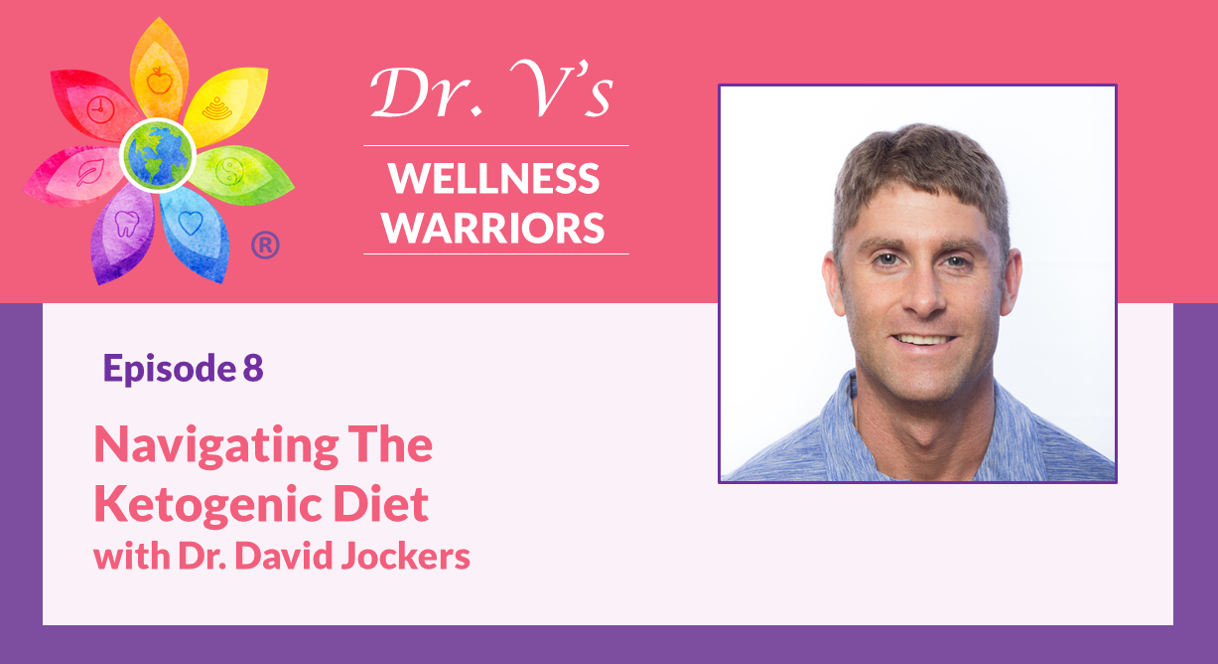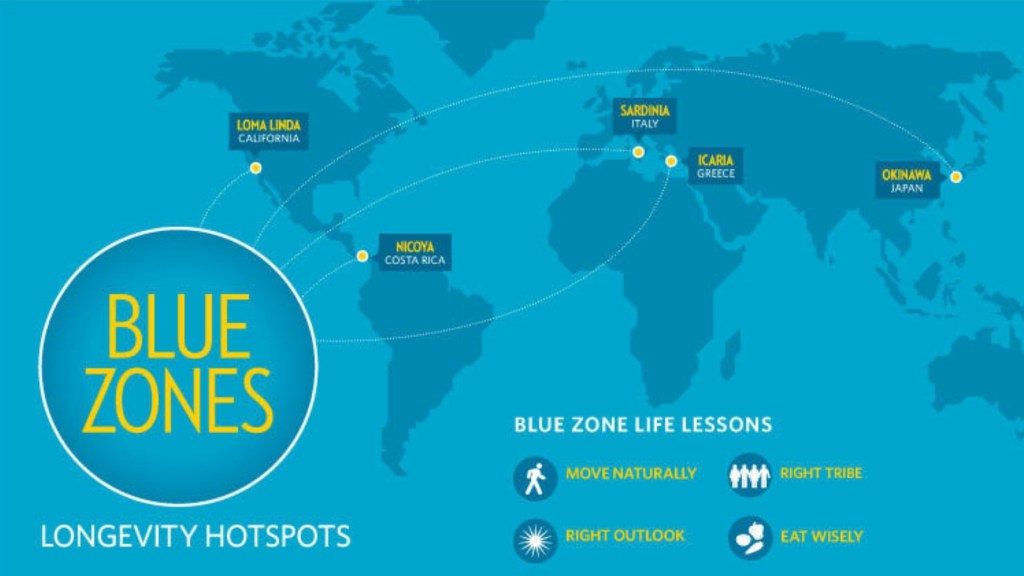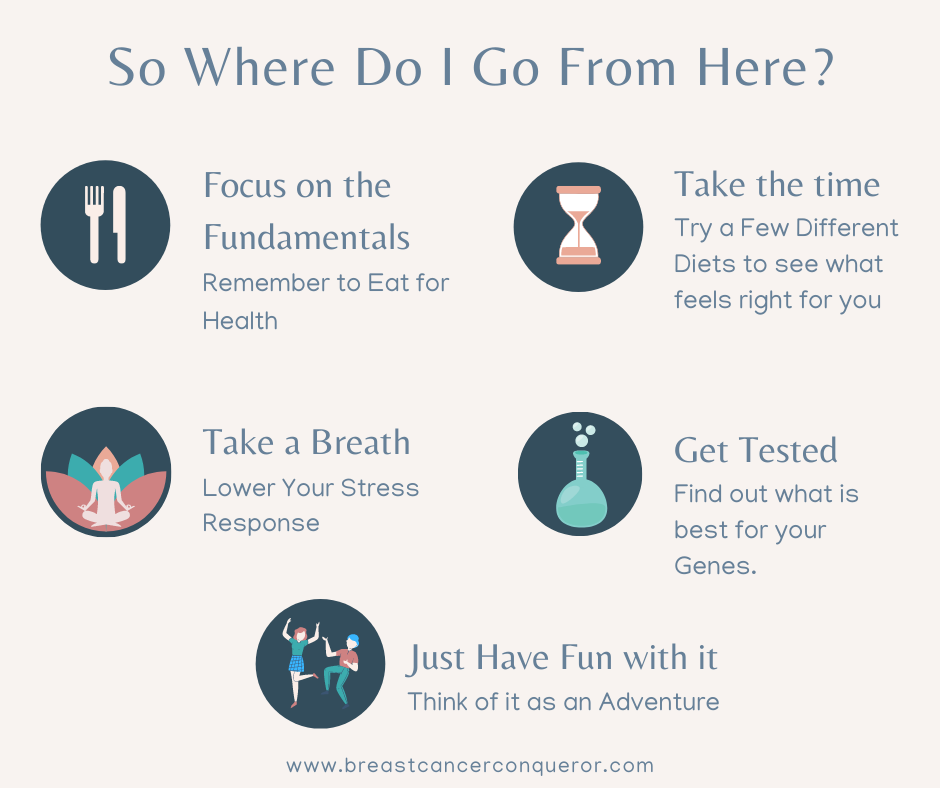We all know that what we eat makes a huge difference between dis-ease and vitality. All meat, no meat, carnivore, keto, vegan, raw… how do we know which way of eating is right for us on our Healthy Breast journey [1]?
The Ketogenic Diet
For many of you, this short description of keto [2] will be a “refresher.” If you are new to this increasingly-popular way of eating, feel free to view my other blogs as well as keto-based recipes [3] for more info.
The ketogenic diet is described by some as a “meat-heavy” diet. It is true that the proponents of the diet do feel that animal products (including dairy) are the best source of proteins because they are the closest match to the amino acid combinations found in humans.
 [4]
[4]On the other hand, the ketogenic diet differs greatly from other animal-based diets like paleo [5], Atkins [6], and Carnivore Code [7]. This is because the ketogenic diet places a heavy focus on healthy fats [8]. The goal of a person on a strict ketogenic diet is to get into a state of healthy “ketosis.” This is where the metabolic system begins burning ketone bodies [9] instead of glucose for energy.
Ketogenic eating was actually developed about 100 years ago for those with epilepsy. Dozens of studies [10] since then have shown that it may be an effective short-term way to lower incidences of many common disease conditions, including COPD, Type 1 Diabetes, migraine headaches, autoimmune conditions, and even cancer [11].
These days there are many kinds of ketogenic diets, including gentler renditions compared to strict keto which may be more beneficial for those with adrenal fatigue, thyroid imbalance, or autoimmune conditions. Check out this amazing interview I did recently with Dr. David Jockers [4] to learn more.
The Vegan Diet
In the last article, we heard about the Carnivore Diet [12], which is an extreme way of eating that emphasizes getting the majority of the nutrients, vitamins, and minerals a body needs from organic, grass-fed animal products.
If you want to know what would be at the exact opposite end of the spectrum from eating 100% meat, veganism would be it!
A vegan diet is one in which a person eats no animal products of any kind, including dairy, eggs, or honey. The diet consists mainly of fruits, vegetables, legumes (including soy), bread products, vegetable oils, nuts and seeds, and dairy alternatives like almond and coconut milk.
Experts often cite what is called the China Study [13] as proof positive that a vegan diet is the best for disease prevention. The title of the most well-known book on the subject aptly called The China Study: The Most Comprehensive Study of Nutrition Ever Conducted and the Startling Implications for Diet, Weight Loss, and Long-term Health, pretty much says it all. And so does the book’s popularity. It was published in 2005.
The China Study [13] book looks at the “link between the consumption of animal products (including dairy) and chronic illnesses such as coronary heart disease, diabetes, breast cancer, prostate cancer, and bowel cancer.” The authors conclude that those who ate a mostly whole-foods, vegan diet were able to best avoid the development of all disease, including cancer. The authors also do not consider that reducing carbohydrates may be a factor in lowering disease.
The book is loosely based on the China-Cornell-Oxford Project [14], which was a 20-year study of individuals from 65 rural counties throughout China. The actual study concluded that the “counties with a high consumption of animal-based foods [in 1983–84] were more likely to have had higher death rates from ‘Western’ diseases [as of 1973–75], while the opposite was true for counties that ate more plant-based foods.”
The China Study book does acknowledge that vegans need to supplement with some nutrients in order to get in what they may be missing by going without animal products. In particular, they recommend taking B vitamin supplements and spending time in the sun (or supplementing) to get in enough vitamin D.
The biggest critique I have against this book is that the meats that were consumed were industrial and commercial meats tainted with growth hormones, grains and antibiotics. Grass-fed, clean organic meats have a totally different composition.
What About a Raw Foods Diet?
As a side note, a vegan diet differs from a raw food diet in that food can be cooked. Although most raw foodists are vegans too, technically you can still eat meat if you are a raw foodist (that is, as a long as it remains …you got it….raw).
The former model and actress Carol Alt has been a strong supporter of a raw food diet for many years. She does eat raw, air-dried and cured meats. You can learn more about her take on a raw diet HERE [15].
“Meating” in the Middle: The Blue Zones
The Blue Zone [16] way of eating became known after National Geographic Fellow and journalist Dan Buettner studied the areas across the globe that had the highest concentration of centenarians (people over 100). He found five that fit the bill: Ikaria, Greece; Okinawa, Japan; the province of Ogliastra in Sardinia, Italy; the community of Seventh-day Adventists in Loma Linda, California; and the Nicoya Peninsula in Costa Rica. These communities also had the lowest incidences of heart disease, cancer, diabetes, and obesity.
So what is at the heart of the Blue Zone secret to longevity and resistance to disease?

“It starts with food choices,” says Buettner in his book The Blue Zones Kitchen: 100 Recipes to Live to 100 [17]. “Most of the Blue Zones residents I’ve come to know have easy access to locally sourced fruits and vegetables—largely pesticide-free and organically raised. If not growing these food items in their own gardens, they have found places where they can purchase them, and more affordably than processed alternatives. They have incorporated certain nutritious foods into their daily or weekly meals—foods that often are not even found on the shelves of convenience stores or on the menus of fast-food restaurants across the country.”
Most Blue Zone residents globally do eat a small number of animal products (animal protein about once a week and eggs/other dairies sparingly). They eat whole-grain, slow-processed carbs and only about 7 teaspoons of simple sugars a day. According to the guidelines outlined on the Blue Zones website [18], about 95% of their nutrients comes from fresh vegetables. They also drink lots of fresh water and eat healthy fats like olives and olive oil. [19] Interestingly, almost all eat a small portion of legumes daily. They also occasionally drink alcohol or caffeine but never to excess.
In fact, moderation, balance, and tradition…as well as plenty of exercises and good humor!… seem to be the main themes of the Blue Zone area centenarians in particular. Blue Zoners also continue to use the recipes that have been handed down through the generations in their families and in their cultures and make it a point to eat meals that they like most of all!
“None of the Blue Zones centenarians I’ve ever met tried to live to 100,” comments Buettner [16]. “No one said at age 50 ‘You know what, I’m going to get on that longevity diet and live another 50 years!’ They don’t count calories, take vitamins, weigh protein grams, or even read labels. They don’t restrict their food intake—in fact, they all celebrate with food.”
So Which Way of Eating is Best?
There are experts on both sides of the “meat/no meat” debate who will tout that their way is the absolute best for health and disease prevention. In an environment where opinions dominate, it can be downright confusing for anyone who simply wishes to figure out which diet is right for them.
I suggest to take a big, deep breath and start with the basics!
Since the late 1800s [20], we have known that the internal environment has everything to do with whether cancer tumors grow or not. We also know quite a few specifics about what works in general (and what doesn’t).

A lot of sugar [21] will create inflammation and an internal environment where cancer can grow. So will processed foods, not getting enough fresh, filtered water, living a sedentary lifestyle, being exposed to toxins, and, most importantly, chronic stress [21]!
We also know that foods and lifestyles that create more oxygen in the body (where healthy cells flourish) can create a slightly alkaline environment where cancer cells will have a hard time surviving.
Finally, we know that healthy sources of fats [22]—whether they come from plants or animals—play a huge role in lowering systemic inflammation in general, not to mention in brain health, detoxification, and creating a healthy gut.
The above is the “bare-bones basics” that all experts agree on. Of course, beyond that is where it gets complicated.
Factors such as age, gender, genetics, the state of your gut microbiome, past traumas of any kind (not just health-related), and dozens of other concerns are all “parts of the puzzle” to be considered when putting together the best healing diet for you.
So what to do without going crazy? Here is what I suggest:
#1 Commit to memory the fundamentals of eating for health mentioned above.
Make them your baseline. If you need more information on any one of them, I have written hundreds of articles on this website, most of them dealing with these basic steps as part of the 7 Essentials System®. [1]
#2 Take a deep breath and lower those stress responses.
Studies show without a shadow of a doubt that lowering stress [23] leads to increased healing. Have faith in yourself, your body, and a Higher Power (whatever that means to you). With a little diligence and support, you CAN eat in a way that is both enjoyable and healthy for you.
#3 Get some key tests done. [24]
This includes those which may help you determine where your genetics are at [25] for optimal eating. Keep in mind that test results are not the “end all/ be all” of your journey toward vibrant health. However, they can be valuable “snapshots” to add to the mix when making your decisions.
#4 Finally, give yourself some time.
Take one week, two weeks, or a month per diet type to try them out.
Keep a journal to record how you are feeling each day. If you feel good and have more energy by eating a certain way, that is a good sign. If a way of eating brings you down, gives you low energy, achiness, skin issues, gas and bloating or makes you feel anxious or depressed, it may not be for you at this time. Check that particular diet off the list, then move on to the next way of eating during your “experimenting” time.
#5 Most of all, don’t forget to add a level of “fun and adventure” to the mix!
Discovering which eating style works best for you takes time and commitment, but it doesn’t have to be “just another stress” in your life. In fact, it can even be a fun adventure for you and your whole family.
Remember– a positive attitude can make a world of difference in what you discover along your Healthy Breast [1] path!
Special Promo: If you are a meat-eater, then here is a special promo (link) you may be interested in. Butcher Box is offering free 100% organic, non-GMO turkeys with all initial orders. Click HERE [26] for more info!
